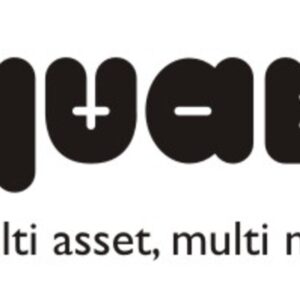- The 10 Biggest Fund Upgrades of 2024
- Stock and Share Market News, Economy and Finance News, Sensex, Nifty, Global Market, NSE, BSE Live IPO News
- Best gilt mutual funds to invest in December 2024
- Mutual Fund Outlook 2025: Which funds and sectors appear attractive in the coming year?
- Is TRBUX a Strong Bond Fund Right Now?
The Securities and Exchange Board of India (SEBI) has recently launched the Mutual Funds Lite (MF Lite) framework to streamline compliance for entities launching passively managed mutual fund schemes. This initiative aims to enhance investment diversification and facilitate the entry of new players into the mutual fund industry.
Bạn đang xem: MF Lite: Sebi floats framework for passive mutual funds schemes; check details
What is Mutual Fund Lite?
Mutual Fund Lite is a simplified alternative to traditional mutual funds, designed to streamline investments in passive schemes such as index funds and exchange-traded funds (ETFs). The current regulatory framework for mutual funds applies equally to both active and passive MF schemes, without distinguishing between entry barriers such as net worth, track record, and profitability.
There is no differentiation in terms of entry barriers (such as net worth, track record, profitability) or ongoing compliance costs for entities looking to launch passive funds.
All domestic passive funds with target maturity debt based on G-Sec, T-bills, and SDL, as well as constant duration passive funds, will be included if their collective AUM surpasses Rs 5,000 crore by December 31 of each Financial Year. State Development Loan (SDL) refers to a bond issued by a state government.
Xem thêm : Top Mutual Fund Strategies for Smart Investors
Additionally, gold ETFs, silver ETFs, and fund-of-funds (FoFs) based solely on gold or silver ETFs will also be considered for coverage.
“Passive funds based on only domestic equity passive indices (broad indices tracked by passive funds or act as primary benchmark for actively managed funds), with collective AUM of INR 5,000 Cr. and above as on December 31 of each Financial Year. AMFI, in consultation with SEBI, shall prescribe the list of such domestic equity indices on a periodic basis,” Sebi said in its circular.
Purpose for regulations for MF Lite
In order to address the unnecessary aspects of the existing regulations that may not be relevant for passive funds, a more relaxed framework with lighter provisions, known as “the MF Lite Framework,” is being introduced specifically for passive Mutual Fund schemes. This is aimed at promoting easier entry into the market, encouraging new players, reducing compliance burdens, expanding market reach, facilitating investment diversification, enhancing market liquidity, and fostering innovation.
During the initial phase of integrating the MF Lite Framework, only passive funds linked to domestic equity passive indices and with total assets under management (AUM) of Rs 5,000 crore or more as of December 31st of each Financial Year will be included.
MF Lite’s framework
The framework streamlines compliance requirements, reducing operational burdens for fund houses launching passive funds. This leads to cost savings and decreased regulatory hurdles.
Xem thêm : 3 Eaton Vance Mutual Funds for Long-term Returns
To sponsor MF Lite funds, firms must have at least 20 years of combined experience in key roles. Private equity funds may also sponsor MF Lite entities under specific circumstances.
By focusing on passive investment strategies, these funds can provide cost-effective options for both fund houses and retail investors, improving accessibility to investing.
The implementation of this framework is anticipated to enhance market liquidity by attracting new participants and fostering competition.
MF Lite requires regular portfolio disclosures, with equity passive schemes disclosing quarterly and debt passive funds disclosing monthly.
Who can benefit from MF Lite
MF Lite aims to provide more cost-effective choices for retail investors by offering passive investment strategies that track equity or debt markets. The relaxed compliance environment makes it easier for new entrants, particularly smaller mutual fund companies, to introduce their products without the complications of active fund management.
Existing mutual fund companies that handle both active and passive schemes can now segregate their passive portfolios into a separate entity within MF Lite. This enables them to concentrate on expanding their passive assets efficiently.
Nguồn: https://nullhypothesis.cfd
Danh mục: News






